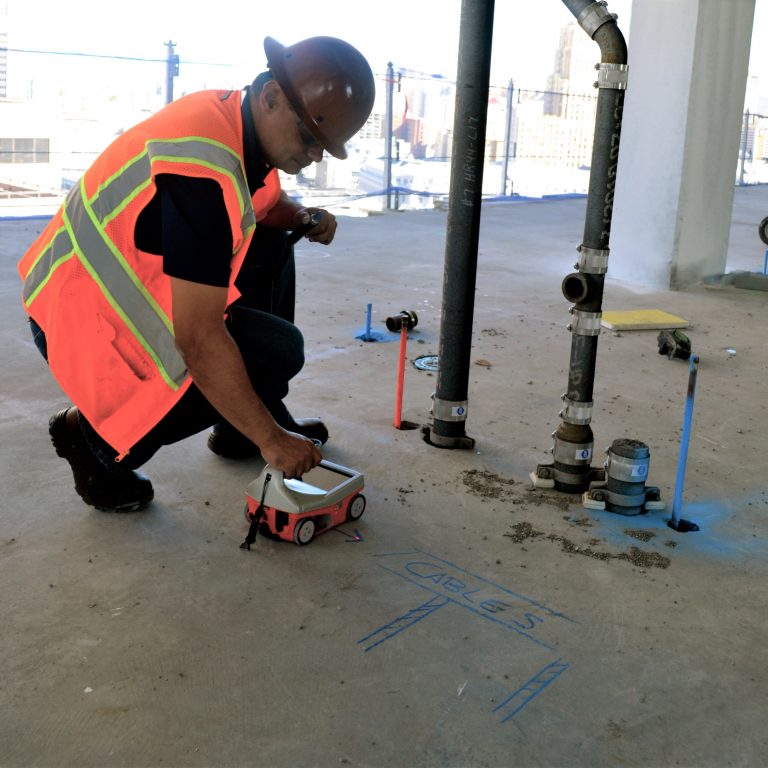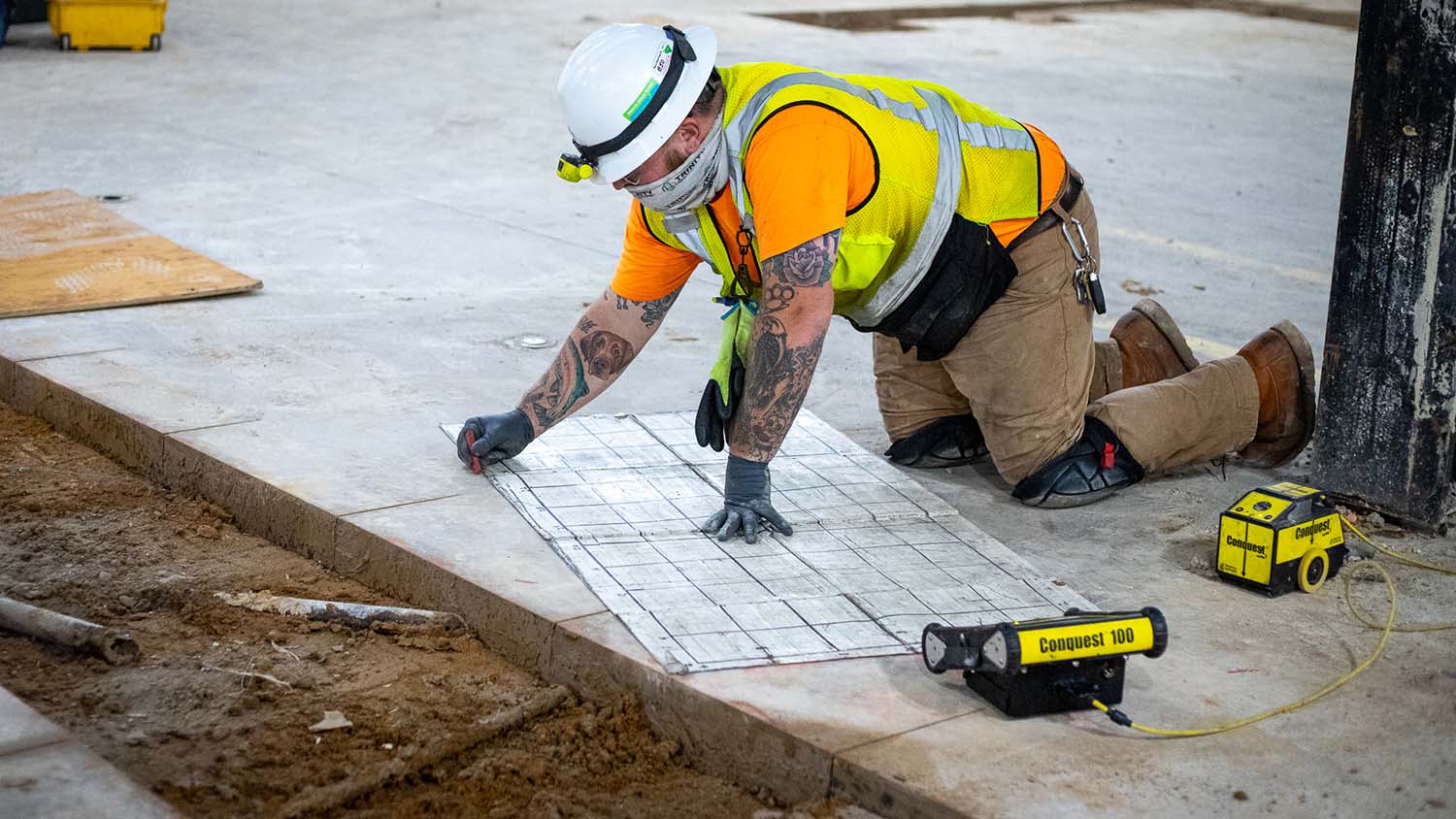RainierGPR Concrete Scanning: Expert Insights and Best Practices
RainierGPR Concrete Scanning: Expert Insights and Best Practices
Blog Article
Exploring the Depths: A Comprehensive Overview to Concrete Scanning and Its Diverse Applications
In the world of building and construction and infrastructure advancement, the meticulous process of concrete scanning holds a pivotal function in ensuring the structural stability and security of tasks. As innovation continues to progress, the applications of concrete scanning have actually increased far past mere surface-level assessments.
Significance of Concrete Scanning
Recognizing the value of concrete scanning is essential in making sure the security and honesty of frameworks during building and improvement projects. Concrete scanning uses innovative technologies such as ground-penetrating radar (GPR) and electromagnetic induction to identify embedded items, voids, or other anomalies within concrete structures.
Furthermore, concrete scanning plays a pivotal function in making sure compliance with building regulations and guidelines that mandate the security of existing architectural elements during building and construction activities. By accurately drawing up the inner composition of concrete, scanning innovations make it possible for building specialists to make informed choices that support the architectural stability and resilience of structures and facilities tasks. In significance, the importance of concrete scanning depends on its capacity to safeguard both the structural honesty and the workers associated with construction ventures.
Technologies Made Use Of in Concrete Scanning
Concrete scanning depends on sophisticated innovations such as ground-penetrating radar (GPR) and electromagnetic induction to accurately find ingrained things and anomalies within concrete structures. Ground-penetrating radar operates by discharging high-frequency electro-magnetic waves right into the concrete.
Electro-magnetic induction, on the various other hand, functions by creating electromagnetic fields around a concrete framework via a transmitter coil. When steel things exist within the concrete, they interrupt these magnetic fields, creating eddy currents to stream with the metal. By gauging the modifications in the electromagnetic fields with a receiver coil, the system can identify the location of metallic items in the concrete.
These innovative technologies play a critical function in non-destructive testing, guaranteeing the security and integrity of concrete structures in different industries.
Applications in Construction Sector
Within the construction sector, concrete scanning innovation finds diverse applications that improve task effectiveness and safety and security. Furthermore, concrete scanning is utilized for finding spaces, such as air pockets or locations of damage within concrete, which can jeopardize the general strength of a framework. Concrete scanning plays a vital duty in quality control by confirming the density of concrete covers over support, making certain compliance with design specifications and criteria.

Security Benefits of Concrete Scanning
In the realm of construction safety and security, the application of concrete scanning technology offers a vital advantage in preemptively identifying prospective dangers and strengthening structural integrity. By making use of advanced scanning techniques such as ground-penetrating radar (GPR) and electro-magnetic induction, construction teams can properly locate rebar, post-tension cords, conduits, and other concealed things within concrete frameworks. This aggressive technique significantly reduces the risk of accidental strikes during drilling, cutting, or coring activities, thereby stopping expensive problems, injuries, and project delays.
In addition, concrete scanning boosts employee security by providing real-time information regarding the structural problem of concrete aspects. This information allows building professionals to evaluate the honesty of existing frameworks, determine deterioration or issues, and make notified choices relating to fixing and maintenance procedures. By resolving possible safety worries promptly, concrete scanning adds to developing a safe working environment and reducing the likelihood of structural failings or mishaps on building and construction websites. Ultimately, the security advantages of concrete scanning not just guard assets and lives however likewise promote market criteria for top quality and reliability.
Future Trends in Concrete Scanning
Emerging innovations in scanning technology are poised to reinvent the area of concrete evaluation and evaluation. One major fad that is acquiring traction is the integration of fabricated intelligence (AI) and device discovering formulas into concrete scanning gadgets. By using the power of AI, these systems can examine huge amounts of data collected throughout scanning procedures to supply more thorough and exact insights into the condition of concrete structures. This can assist in discovering hidden problems, forecasting prospective structural failings, and even advising maintenance strategies.
One more substantial pattern is the why not check here growth of more portable check my reference and easy to use scanning devices. Miniaturization of scanning tools permits for less complicated access to constrained areas and remote areas, making examinations extra extensive and reliable. Furthermore, innovations in cordless communication modern technologies enable real-time data transfer and analysis, promoting quicker decision-making procedures.
Furthermore, there is a growing concentrate on sustainability in concrete scanning innovations - RainierGPR Concrete Scanning. Producers are significantly integrating green materials and energy-efficient functions into their tools to decrease environmental influence. These future fads are readied to enhance the effectiveness, precision, and sustainability of concrete scanning methods, forming the market's future landscape
Conclusion
Finally, concrete scanning plays a critical duty in the building sector by ensuring the security and effectiveness of numerous tasks. By utilizing sophisticated innovations, such as GPR and radar imaging, experts are able to properly detect potential hazards within concrete structures. The applications of concrete scanning are huge and proceed to evolve, making it an important device for maintaining the stability of buildings and framework. As technology advances, the future of concrete scanning holds promising advancements for boosting building processes.

Report this page